
Francisco Morazán is one of the departments of Honduras.
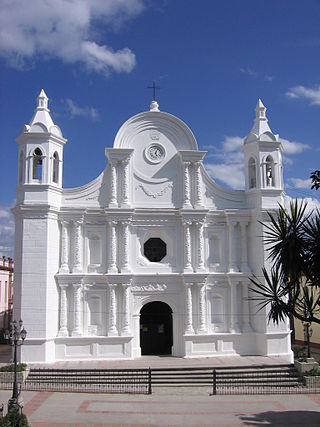
Copán is one of the departments in the western part of Honduras. The departmental capital is the town of Santa Rosa de Copán. The department is well known for its tobacco and fine cigars.
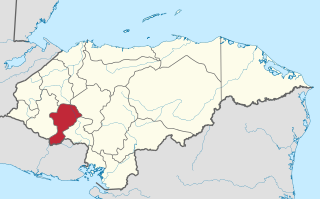
Intibucá is one of the 18 departments in the Republic of Honduras. Intibucá covers a total surface area of 1,186.1 square miles (3,072 km2). Its capital is the city of La Esperanza, in the municipality of La Esperanza.
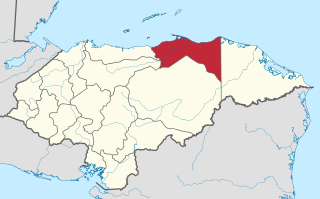
Colón is one of the 18 departments into which Honduras is divided. It was created in 1881. The departmental capital is Trujillo, and the other main city is Tocoa. Trujillo was the site of the first Catholic mass on the American mainland, held when Christopher Columbus reached the Honduran shore in 1502.
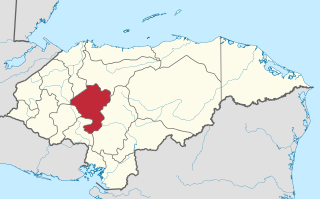
Comayagua is one of the 18 departments (departamentos) into which Honduras is divided. The departmental capital is Comayagua.

El Paraíso is one of the 18 departments (departamentos) into which Honduras is divided.
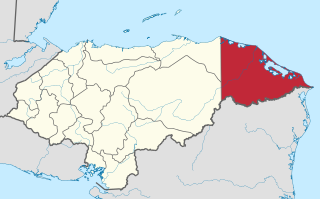
Gracias a Dios is one of the 18 departments (departamentos) into which Honduras is divided. The departmental capital is Puerto Lempira; until 1975 it was Brus Laguna.
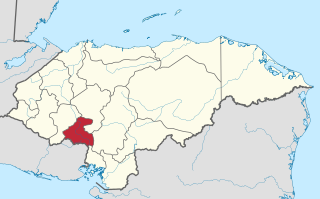
La Paz is one of the 18 political and geographic departments of Honduras. The departmental capital is the city of La Paz.

Lempira is one of the 18 departments in Honduras. located in the western part of the country, it is bordered by the departments of Ocotepeque and Copán to the west, Intibucá to the east, and Santa Bárbara to the north. To its south lies the El Salvador–Honduras border. The departmental capital is Gracias.

Ocotepeque is one of the 18 departments of Honduras, Central America, located in the West and bordering both El Salvador and Guatemala. It was formed in 1906 from part of Copán department. The capital and main city is Nueva Ocotepeque.

Santa Bárbara is one of the 18 departments (departamentos) into which Honduras is divided. The departmental capital is Santa Bárbara.
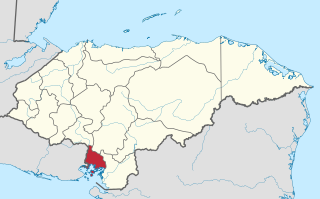
Valle is one of the 18 departments into which Honduras is divided.
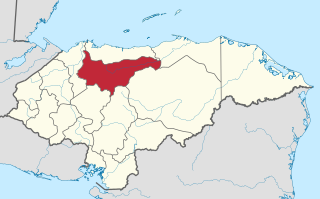
Yoro is one of the 18 departments into which Honduras is divided. The department contains rich agricultural lands, concentrated mainly on the valley of the Aguan River and the Sula Valley, on opposite ends. The departmental capital is Yoro. The department covers a total surface area of 7,939 km2 and, in 2005, had an estimated population of 503,886 people. It is famous for the Lluvia de Peces, a tradition by which fish fall from the sky during very heavy rains.
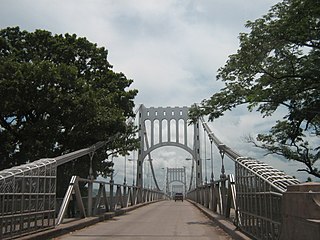
Choluteca is a municipality and the capital city of the Honduran department of the same name. Situated in southern Honduras between El Salvador and Nicaragua, the city is generally considered the regional centre of southern Honduras and is a major transit point on the Pan-American Highway. It has a major bus station and is home to the regional light (ENEE) and water (SANAA) utilities. The city is located on the Choluteca River, near the centre of the department. An arching silver bridge crosses the river into the city.
El Corpus is a municipality in the Honduran department of Choluteca.

Ocotepeque is a municipality in the Honduran department of Ocotepeque. The town of Nueva Ocotepeque is the municipal seat and the capital of the department.
Langue is a municipality in the Valle Department, Honduras.
San Lorenzo is a city, with a population of 35,560, and a municipality in the Honduran department of Valle.

José Dionisio de la Trinidad de Herrera y Díaz del Valle was a Liberal Honduran politician, head of state of Honduras from 1824 to 1827 and head of state of Nicaragua from 1830 to 1833. During his terms, Honduras and Nicaragua were states within the Federal Republic of Central America. Herrera was an uncle of the Liberal Central American general Francisco Morazán.

















